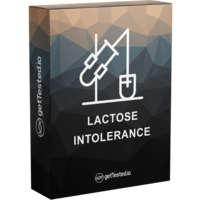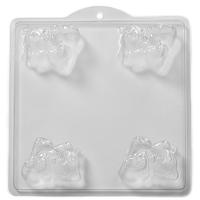Description
About the Lactose Intolerance Test by GetTested The Lactose Intolerance Test by GetTested is a comprehensive test that measures various types of Lactose Intolerance, such as hereditary lactose intolerance and acquired lactose intolerance. Lactose intolerance arises when the small intestine struggles with processing lactose, the sugar in milk. It’s different from cow’s milk allergy, which requires a distinct approach to treatment. Symptoms of Lactose intolerance Though lactose intolerance is mostly harmless, the symptoms can cause significant discomfort. The most common symptoms include: Stomach pain Diarrhoea Flatulence Nausea Bloating Causes of Lactose Intolerance Lactose intolerance stems from a deficiency in the lactase enzyme, essential for digesting lactose in dairy products. Usually, the lactase enzyme turns the milk sugar, or lactose, into two simple sugars that are absorbed into the bloodstream. However, if you lack lactase, the lactose remains undigested and thus stays in the intestine, where it interacts with normal bacteria. This is what causes the uncomfortable symptoms. Reducing or avoiding lactose often alleviates these symptoms. Lactose Intolerance in Children Notably, lactose intolerance is rare in children under five. If any stomach issues arise in this age group, it often stems from cow’s milk allergy. Accurate diagnosis by GetTested ensures appropriate dietary management. Forms of Lactose Intolerance Primary Lactose Intolerance Predominantly, this hereditary form is most common in regions like Asia, Africa, and southern Europe. It arises from a gradual decrease in lactase production, typically appearing in late childhood to early adulthood. The decrease in lactase production normally happens, because children get older and gradually start replacing milk with other foods and drinks. Usually the lactase levels remain high enough to still digest a normal amount of dairy products, but this is not the case with Primary Lactose Intolerance, in which lactase production has massively dropped by adulthood. Secondary Lactose Intolerance This type of Lactose Intolerance is a temporary form and can develop from untreated intestinal diseases, infections or bacterial overgrowth. Some of the diseases that can instigate lactose intolerance are celiac disease and Crohn’s disease. It usually resolves after treating the underlying condition, although it may take some time. Congenital Lactose Intolerance Conversely, this rare, genetic condition means the body cannot produce lactase at all. It is a disorder passed down through an inheritance pattern called autosomal recessive. This means both the mother and father must pass on the gene variant for the child to be affected by this disorder. This condition requires a lifelong commitment to a lactose-free diet. Lactose Intolerance vs. Cow’s Milk Allergy Commonly, people confuse these two conditions. Lactose intolerance is related to the body’s reaction to milk sugar, while cow’s milk allergy involves an immune response to milk proteins. Cow’s milk allergy, like other food allergies, happens because the immune system overreacts to cow’s milk. This means that drinking cow’s milk can trigger an allergic reaction. Some of the symptoms of Cow’s milk allergy are similar to the symptoms of Lactose Intolerance, as both can cause digestive problems. However, cow’s milk allergy can also cause symptoms such as skin rash, swelling of the lips, face or skin around the eyes or a runny nose. Cow’s milk allergy is most common in young children. Usually they grow out of it. To get an accurate diagnosis, GetTested offers both lactose intolerance tests and milk allergy tests. Testing Methods by GetTested GetTested conducts two type of tests: Breath Tests GetTested’s breath test measures hydrogen and methane after consuming a lactose solution. Increased levels in these gases suggest lactose intolerance. DNA Tests Alternatively, DNA testing identifies hereditary lactose intolerance but does not confirm active intolerance. Conducting the Test The lactose intolerance test involves collecting breath samples over three hours after drinking a lactose solution, provided by GetTested. For optimal results, it’s best conducted on an empty stomach. Subsequently, GetTested’s lab analyses your samples, and you receive your results digitally.






Reviews
There are no reviews yet.